
Halloween Sugar Rush – What Should You Do About It?
BM247 provides support for metabolic function. Work as an appetite suppressant that may help with weight loss. Best used for hunger control for food and sugar cravings.
Have you ever felt a sugar rush? Your mouth feels dry from the sweetness; you feel lightheaded; a strange rush of energy runs through your arms and legs…
You may have gotten one from eating too much dessert at a party or gorging on your kids’ Halloween candy.
Halloween has always served as an excuse to eat a bit more candy than usual and let our kids do the same.
This holiday is about finding the perfect costume, horror movie marathons, and the prevalence of candy.
This Halloween, to prevent you from sugar-binging, it is crucial to understand what a sugar rush means and does to your body.
First, let’s talk about how sugar works.
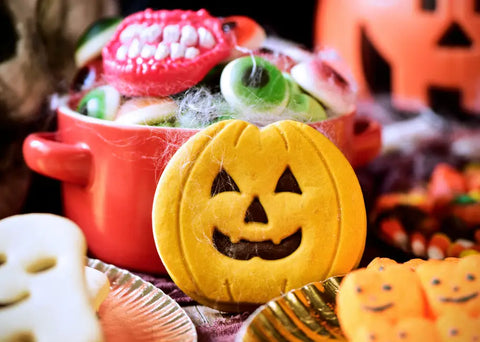
Understanding high blood sugar…
The majority of the food you ingest is broken down into glucose. This type of sugar is the primary fuel that helps your muscles, organs, and brain work properly, but only when it enters your cells.
Insulin is responsible for unlocking cells so glucose can enter them. Without this hormone, the glucose remains in your bloodstream and can become increasingly more concentrated over time.
If glucose builds up in your bloodstream, your blood sugar levels rise and can cause damage to organs, nerves, and blood vessels over time.
…and a blood sugar spike
A blood sugar spike occurs when glucose builds up in your bloodstream and your blood sugar levels increase.
Knowing the early symptoms of high blood sugar (or hyperglycemia) is essential to prevent more severe symptoms.
Some of them include the following:
- Feeling thirsty
- Having a parched mouth
- Urinating often
- Having blurred vision
BM131 is useful for frequent urination and irritability, changes in appetite, weight loss, unusual thirst, vision problems (blurring spots), tiredness, pale skin color, numbness or tingling feeling in the hands or feet, chest pain, repeated infection or slow healing of wounds, genital/vaginal itching and constant headaches.
People with diabetes usually have a great understanding of how sugar works, as they need to have their blood sugar levels managed.
What kind of food causes a sugar rush?
Simple sugars are the leading cause of a sugar rush. These can be:
- Processed or refined sugar items
- Baked goods, such as doughnuts, cakes, cookies, or brownies
- Processed prepackaged foods, such as candy bars
- Packaged snack cakes
- Sodas and energy drinks
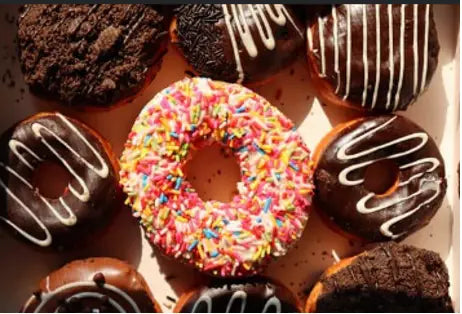
Be aware that most prepackaged foods contain hidden sugars that you should avoid. Check the ingredients for glucose, sucrose, fructose, lactose, maltose, or corn syrup.
Daily, to prevent a blood sugar spike, choose complex carbohydrates for energy:
- Whole grain and whole wheat products
- Legumes
- Peas
- Beans
- Lentils
- Chickpeas
- Oatmeal
- Whole grain pasta
- Sweet potatoes
- Whole grain cereal

These will give you sustained energy and satisfy you without causing feelings of lethargy.
What are the symptoms of a sugar rush?
- Sugar cravings. What comes after high sugar consumption? That’s right, a desire for more! Eating sugar is an experience that releases dopamine in your body, a neurotransmitter associated with addictive behavior. That is why you are inclined to re-experience it.
- Short-term energy increase. Sweet foods suddenly increase your energy levels. However, this energy boost only last for about 30-40 minutes. You end up feeling dizziness, alertness, and high energy from the sugar rush, which eventually leads to a crash in your blood sugar.
- Hunger. When you overeat sugar, your body tends to produce high insulin doses to fight the sugar high. After this process is over and your blood sugar levels are low, you tend to feel more hungry, even after eating.
- Fatigue. Your body requires the help of more energy to digest sugary foods. This is why you feel fatigued and lethargic after eating candies, pre-packed items, and cakes that provide no nutritional benefit.
BM19 may help your body deal with ravenous hunger, overweight, and unnecessary fat around the belly and other body parts.
Breaking down the process of a sugar rush
A massive dip in energy follows when you consume a sudden high amount of sugar.
It can be compared to a roller coaster taking you up before crashing down if you are unfamiliar with the feeling.
Sugar has an addictive power that comes from its ability to spike your blood sugar and insulin levels. It increases your feelings of energy when your blood sugar drops and triggers the reward center of your brain to keep you craving more.
By definition, a sugar binge is “a cycle of intense sugar cravings that can repeatedly occur throughout the day.”
As you digest your Halloween candy, sugar enters your bloodstream, and your blood sugar levels increase. At this moment, you will feel the symptoms of a ‘sugar rush’ or an energy boost that usually does not last longer than 10-20 minutes.
Then, as your body feels the presence of sugar, it starts producing insulin, which signals your cells to take in the sugar in your bloodstream and use it for energy.
As soon as your cells have taken in all they can, your body stores more glucose in your liver and muscles as glycogen. By using and storing the sugar out of your bloodstream, your blood sugar levels drop, causing the well-known ‘sugar crash.
During this sugar crash, you start craving more sugar; you feel tired, stressed, and irritated, and your mood changes.
So, you eat another candy… but if you do, you restart the cycle.
If you give in to your desire, you will feel down again, physically and mentally.
Now, you probably understand why sugar is linked to an addictive drug. It triggers the addiction mechanisms like any other addictive substance (e.g., alcohol).
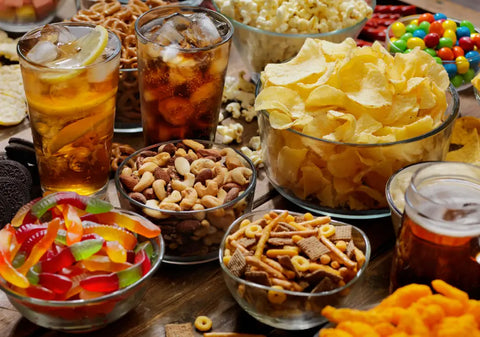
Why should you prevent a sugar addiction?
Sugar has a significant negative impact on your body. It causes several health problems, especially if you consume it excessively.
A sugar rush spikes your blood sugar levels and then rapidly lowers them. This process comes with fatigue and irritability and affects your mental alertness.
The sugar not stored in your muscles and liver ends up being stored as fat in the body, potentially leading to obesity.
Excessive sugar consumption may cause diabetes, heart disease, or other medical conditions. It also leads to cravings and creates a psychological need for sweets that leads to sugar binges.
How can you break the addiction to sugar binges?
To be able to do this, it helps if you understand the connection between digestion and insulin.
After eating a meal or drinking soda, the containing carbohydrates are digested in your stomach and small intestine. When these sugars enter your bloodstream, your blood sugar levels rise.
Insulin has the task of lowering your blood sugar by sending trigger signals to your cells to pull it from your bloodstream.
Eating a carbohydrate diet (sugar, pasta, bread, cookies) may desensitize your cells to frequent insulin signaling. It takes more sugar to produce enough insulin for your cells to respond.
So, what can you do about this?
To break the addiction to sugar binges, do not look at how you are eating; instead, pay attention to what you choose to eat.
Top-quality carbohydrates that contain fiber, for instance, break down into sugar more slowly than sugary foods or junk food and take longer to digest. This results in a slower blood sugar level rise and the absence of the energy rush followed by the quick crash.
Add protein and healthy fats to your diet to stabilize your blood sugar levels and prevent fast rises and drops.
By avoiding sugar binges, your body will feel more stable; you may sleep better and have better overall energy levels. Also, you will notice that you do not crave high-sugary foods as much, meaning that you can enjoy a more prosperous and healthier life without the overwhelming feelings of a sugar rush and the following crash.
BIO24 may provide energy and help you cope with stress. Supports your body's ability to manage, absorb, and use nutrients while boosting your physical health and immune system. It is a useful remedy to keep you alert, fresh, and stress-free all day.
How is your body affected by a sugar rush?
1. It increases your energy.
A sugar rush likely gives you energy for a short time but typically results in a blood sugar drop after a while – also known as a ‘sugar crash. During this ‘crash,’ you usually feel like you are in an energy slump. You might experience fatigue, headache, shaky hands, dizziness, and light-headedness – the common symptoms of a sugar rush.
2. It damages your skin.
When blood sugar spikes rapidly, the process of glycation starts, meaning that the sugar attaches itself to collagen.
This attachment causes skin inflexibility and leads to premature aging of the skin.
Since a sugar rush means a rapid increase in blood sugar, this is what happens to your skin when you consume too much sugar too fast.
BM66 provides natural support for skin disorders, including discoloration of the skin, white spots or patches on the face, neck, forehead, chest, around the lips, eyes, or on one or two breasts.
3. It can cause serious health issues.
Long-term consumption of high amounts of sugar causes insulin resistance, which can be responsible for serious health problems, including diabetes, high blood pressure, breast cancer, and prostate cancer.
How can you prevent and manage a sugar rush during Halloween?
Preventing a sugar rush is in the same line as breaking the addiction to sugar-binging.
To prevent a sugar rush:
- Plan your candy consumption. If you are eager to eat some of the candy in your kid’s Halloween bucket, eating a piece or two after a balanced meal with fiber and protein will significantly reduce the chance of experiencing a sugar rush and crash.
After a sugar rush:
- Eating a meal with high-fiber-carbohydrate and protein can help balance it out. This helps because when carbohydrates, or sugar, are paired with protein, the protein slows down the digestion process, allowing a gradual blood sugar rise and then a gradual decline instead of an intense spike and drop. Eating a bit of cheese or meat, along with your Halloween candy, can significantly help your blood sugar. In addition, drinking water and moving after eating can help lower your blood sugar.
How much sugar should you consume per day?
You should be familiar with the recommended sugar intake limits to prevent a blood sugar spike and many sugar-related issues.
Knowing this will help you set limits and make wiser choices when consuming your Halloween candy.
According to the American Heart Association (AHA),
- Men should consume no more than 150 discretionary calories of sugar per day. This equals 38g or nine teaspoons (tsp) of sugar.
- Women should not ingest more than 100 discretionary calories of sugar per day. The equivalent amount of 25g or 6tsp of sugar.
- Children between the ages of 2 and 18 should not exceed the limit of 25g or 6tsp of added sugar.
The bottom line
Sweet cravings are pretty common and typical, especially during Halloween.
This holiday can serve as a reminder that sugar must be consumed in moderation.
Overeating of it too fast can result in a sugar rush, making you feel tired and drowsy, and can potentially lead to weight gain and, in frequent cases, to more severe health conditions.
Sugar is powerful enough to rewire our brains, which requires us to be careful as it is hard to reverse the habit of bingeing on it.



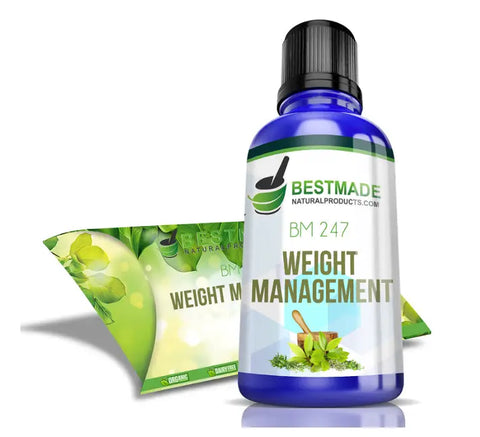
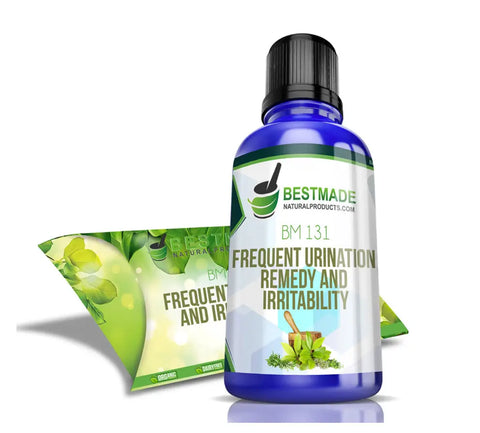
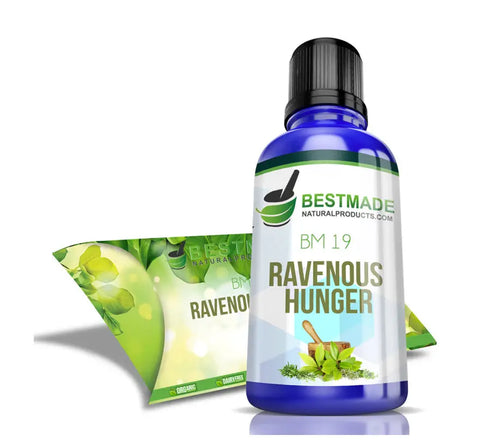

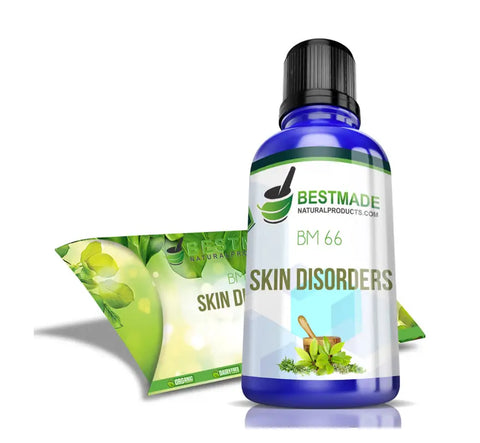
Leave a comment